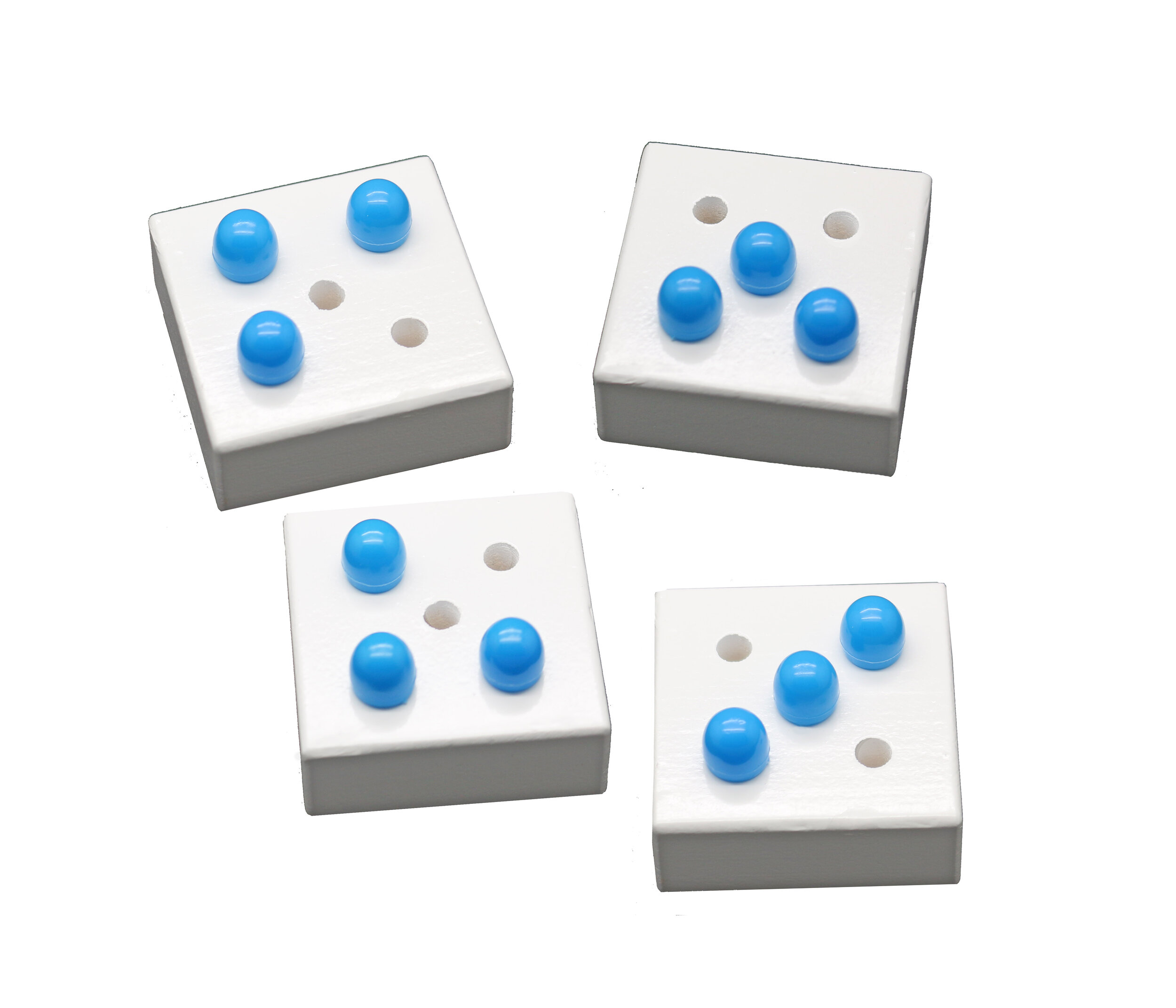Early Years
The NCETM has outlined six key areas of Early Mathematics Learning. Outlined below are ways in which Spot On With Numbers’ Pegs and Boards can be used as a tactile teaching aid in four of these areas:
Here, exploring different ways of representing 3 and making links between these representations, gives children a sense of conservation as well as developing skills for subitising 3.
cardinality and counting
- Counting: tagging each object with one word number
The pegs and boards provide a tactile resource to count. Counting backwards is difficult for young children, but once the patterns that the numbers on the board make become familiar, children can draw on these to ease the strain on working memory. Children can practise counting backwards as they remove the pegs.
- Counting: knowing the last number counted gives the total so far
Counting pegs from the box onto the peg board to support the children focusing on the 'stopping number'.
- Subitising: recognising small quantities without having to count them all
Children need opportunities to regularly count small quantities so they become familiar with the pattern created. Dice patterns are a good starting point for encouraging subitising as they are easily recognised. The advantage of Spot On With Numbers is that there is the opportunity to move the pegs to less familiar arrangements, allowing children to discover the link between the familiar pattern and other representations of a given number.
- Conservation: knowing that the number does not change if things are rearranged.
Realising that if no pegs are removed or added, the number will be the same.
Comparison
- Spot On With Numbers can be used to find one more or one less than a number by adding or removing pegs.
- With the opportunity to represent a number in many different ways, children can be challenged to identify groups with the same number of pegs, although they may look different.
- The pegs and boards can be used to compare numbers using ‘more’ or ‘fewer’ and reasoning.
- Children can be encouraged to notice connections (linking to their fingers and other representations such as dice or dominoes) and explore similarities and differences.
composition
- The pegs and boards naturally decompose numbers into parts as the boards only full a total of 5 pegs. Smaller numbers, for example 2 and 3 can also be modelled over two boards and children can explore how they come together to total 5.
- As the structures are flexible, inverse operations are easy to model.
- Children can partition in many different ways using more than two boards.
- The patterns are very visual giving children strong images to draw on when learning number bonds.
Pattern
- With a range of colours and configurations, children can have lots of fun exploring AB, ABC, ABB or even ABBC patterns.
Children can start by continuing a pattern and copying a pattern before making their own pattern. Children love to spot an error in a pattern and the real test of their understanding of patterns is if they can identify the part of the pattern that is repeated or the 'unit of repeat'.



